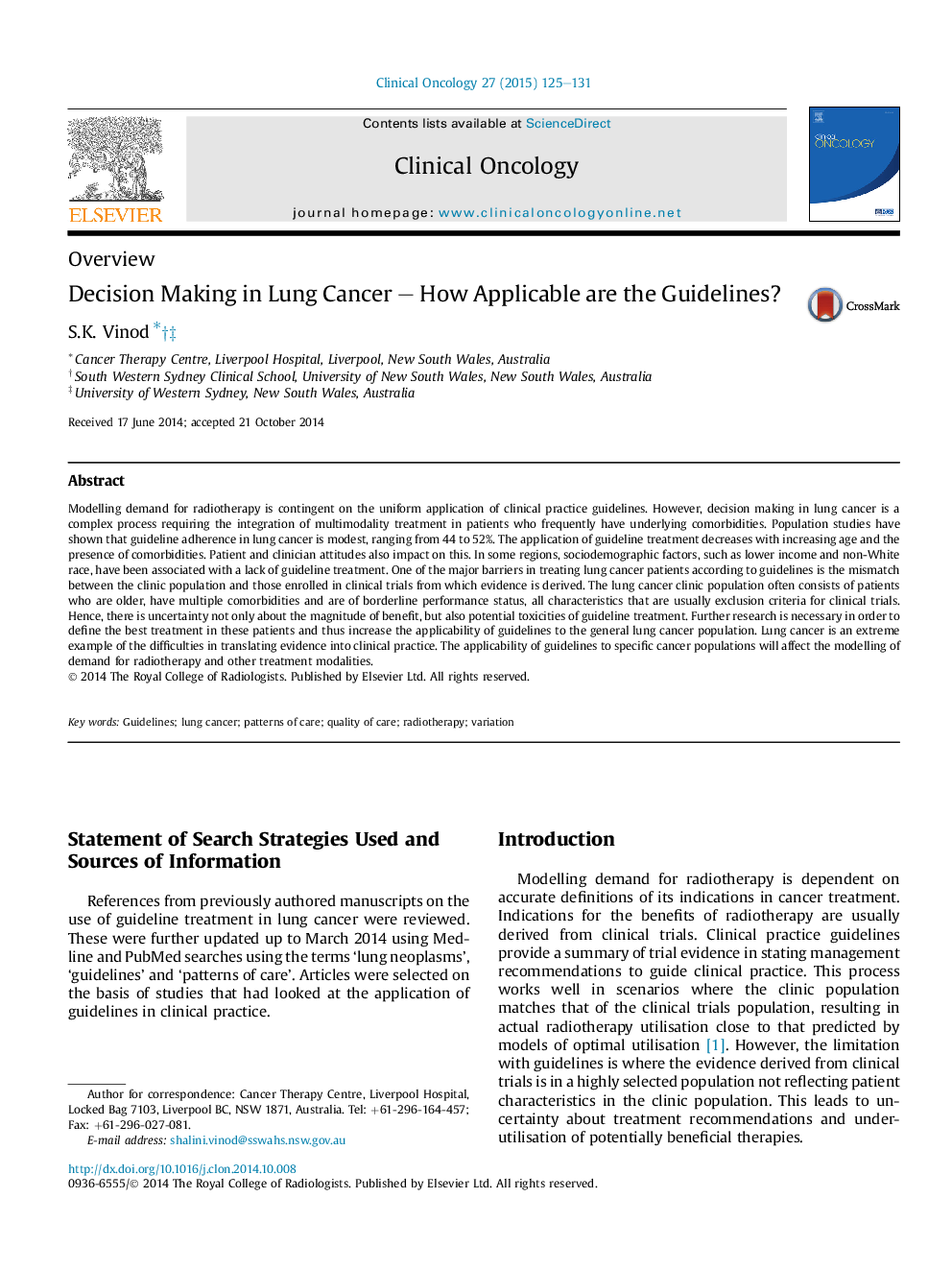| Article ID | Journal | Published Year | Pages | File Type |
|---|---|---|---|---|
| 5698400 | Clinical Oncology | 2015 | 7 Pages |
Abstract
Modelling demand for radiotherapy is contingent on the uniform application of clinical practice guidelines. However, decision making in lung cancer is a complex process requiring the integration of multimodality treatment in patients who frequently have underlying comorbidities. Population studies have shown that guideline adherence in lung cancer is modest, ranging from 44 to 52%. The application of guideline treatment decreases with increasing age and the presence of comorbidities. Patient and clinician attitudes also impact on this. In some regions, sociodemographic factors, such as lower income and non-White race, have been associated with a lack of guideline treatment. One of the major barriers in treating lung cancer patients according to guidelines is the mismatch between the clinic population and those enrolled in clinical trials from which evidence is derived. The lung cancer clinic population often consists of patients who are older, have multiple comorbidities and are of borderline performance status, all characteristics that are usually exclusion criteria for clinical trials. Hence, there is uncertainty not only about the magnitude of benefit, but also potential toxicities of guideline treatment. Further research is necessary in order to define the best treatment in these patients and thus increase the applicability of guidelines to the general lung cancer population. Lung cancer is an extreme example of the difficulties in translating evidence into clinical practice. The applicability of guidelines to specific cancer populations will affect the modelling of demand for radiotherapy and other treatment modalities.
Related Topics
Health Sciences
Medicine and Dentistry
Oncology
Authors
S.K. Vinod,
